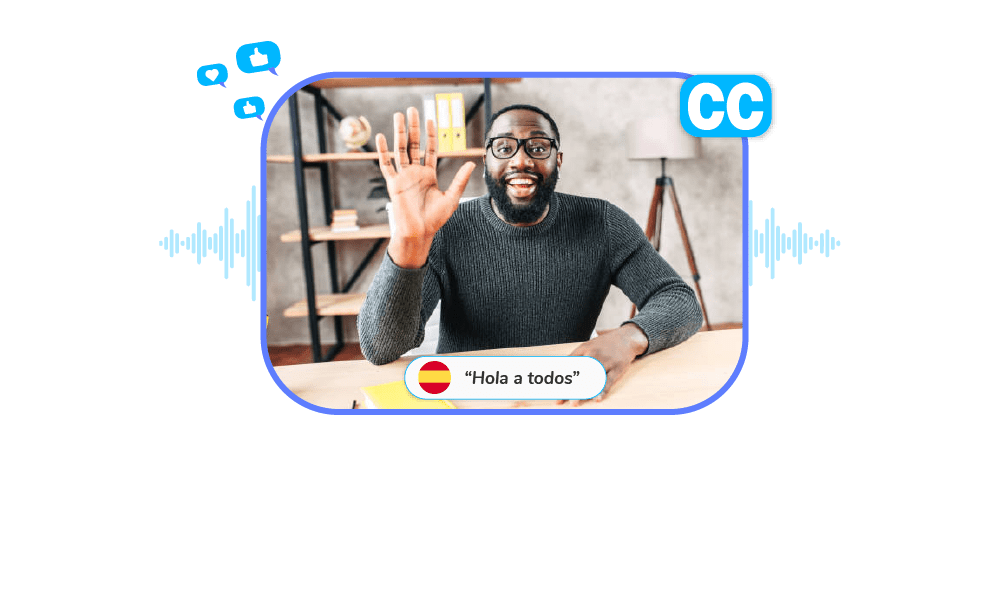The majority of people think that captions and subtitles may be used interchangeably and that captions can be used as an alternative for subtitles or vice versa. However, this is not the situation in reality. The only thing they have in common is that both of them are displayed at the bottom of any display, including those found on YouTube and other streaming platforms, to represent the speakers’ statements and conversations on your TV or phone.
Even the streaming behemoth Netflix places both the caption and the subtitle under one heading, which may cause further confusion for some viewers.
Both captions and subtitles have additional objectives in mind when they provide accessibility to the numerous hard of hearing and deaf individuals as well as individuals who speak a foreign language.
Knowing the difference between captions and subtitles is crucial whether you enjoy watching foreign films or if you are hard of hearing and want to watch the complete film. So what distinguishes them, and what makes it crucial to understand them?
However, subtitles are written with the understanding that the individual utilising them will be able to hear but speak and comprehend a language other than the one that is being spoken in the image. Subtitles are the English translation made available to you if you enjoy watching foreign films.
The fact that captions can have one of two different formats is another way to differentiate them from subtitles. Depending on the type of captions offered for the movie you’re viewing, you can choose between open and closed captions.
Where do you use them?
The primary purpose of subtitles is to enable viewers to follow along with any foreign film in their own language. As long as they are appropriate for the learners’ level of ability, reading subtitles has also been shown to be a successful method for learning a new language since it helps students’ perception of that language.
In addition to video introductions or advertising presented on many websites on the internet, you may discover open captions in movies showing in cinemas for scheduled screenings for the hearing impaired and the deaf communities.
Advantages of Adding Subtitles
Subtitles have the advantage of being more affordable than captioning because they are less comprehensive than closed or open captions. Due to their translation and localization, subtitles also help make information accessible to more people throughout the globe.
Limitations of Subtitles and captions
The fact that subtitles can’t be as exact as possible in every translation is one of its limitations. The straight translations and the localised language of the actual film will alter, but the meaning will remain the same.
It is necessary to adapt the subtitles so that viewers who are reading the translation while watching the movie may readily understand them.
Simply design captions in a creative or unusual way if you are a caption creator or transcriptionist. They will be able to change everything from the font size to the font colour, even the font background, to make them even more accessible and understandable for everybody who will be reading them.
What to use for your film captions vs subtitles?
What you decide to use for your movie will depend on a number of things, including the platform you’re using, how tech-savvy your audience is, and how much effort you’re prepared to put in to ensure that your material is accessible to everyone, whether they have hearing loss or not.
Going with captions over subtitles is the ideal transcription option if you want your movie to be adaptable and available so that more viewers can experience your content. Both of the two options, closed or open, will function and ensure that your content not only reaches a global audience but also empowers all hard of hearing audiences worldwide.
Final Thoughts
Even though they appear to be extremely similar, captions and subtitles differ in a number of ways, making it simple to identify between the two and decide which is best for your venture.
Both would need effort to make things accessible, but going above and above to allow captioning will always pay off in the long run to reach a larger audience. Go the additional mile to satisfy both so that you may expand your worldwide audience.
The major points here are accessibility and flexibility for everybody, in addition to the fact that it is always the appropriate thing to do in terms of access and commercial sense. So use them both!
For affordable, quality, and reliable transcription and captioning services, order from Wavel.ai today!

.webp)










